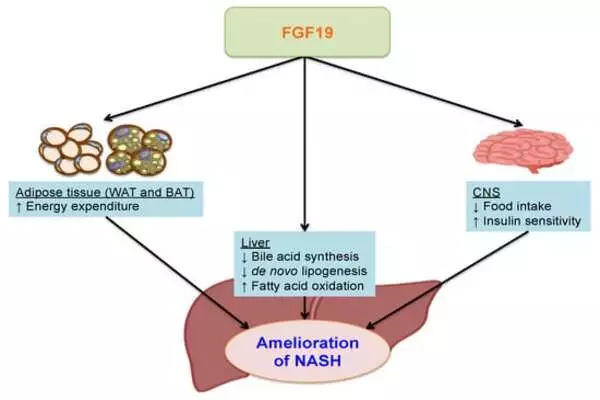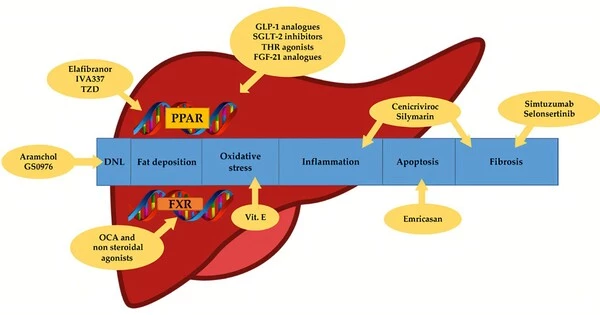A study led by Oregon State University has revealed why particular polyunsaturated fatty acids act to battle a hazardous liver ailment, paving the way for new therapeutic research for a disease with no FDA-approved therapies.
Scientists led by Natalia Shulzhenko, Andrey Morgun, and Donald Jump of Oregon State University employed a technique known as multi-omic network analysis to uncover the mechanism by which dietary omega 3 supplements eased nonalcoholic steatohepatitis, or NASH.
The mechanism involves betacellulin, a protein growth factor that has many beneficial effects in the body but also leads to liver fibrosis, or scarring, as well as the progression to cirrhosis and liver cancer.
“We only succeeded in finding these surprising results because we implemented an entirely unbiased approach that incorporated a diverse type of big data analysis ranging from lipids and metabolites to whole tissue and single-cell RNA sequences,” Morgun, who is a researcher in the Ohio State University College of Pharmacy at Ohio State University.
The findings were reported in the journal EMBO Molecular Medicine.
Via large meta-analysis, we found betacellulin is consistently up-regulated in livers of cancer patients – there’s more of it than there should be. Omega 3 PUFA also reduces, or down-regulates, betacellulin levels in both mice and humans with NASH.
Andrey Morgun
NASH is linked to a condition known as metabolic syndrome. It occurs when toxic fat in the liver kills liver cells, inflames the organ, and promotes fibrosis. Cirrhosis, liver failure, and death are all possible outcomes of the condition.
Metabolic syndrome is defined as having at least two of the following conditions: abdominal obesity, high blood pressure, high blood sugar, low amounts of “good” cholesterol in the blood, and high levels of bad cholesterol and triglycerides.
A high-fat, refined-sugar diet induces persistent low-grade inflammation, which leads to the development of metabolic syndrome. Metabolic syndrome is linked to cognitive dysfunction and dementia, and it is a major risk factor for cardiovascular disease, Type 2 diabetes, and NASH.
The researchers estimate that 35% of adults in the United States have metabolic syndrome.

In this study, scientists employed both a mouse model and human liver transcriptome data – the sum of all messenger RNA molecules expressed from the genes – to identify betacellulin as an omega-3 polyunsaturated fatty acid (PUFA) target.
“Via large meta-analysis, we found betacellulin is consistently up-regulated in livers of cancer patients – there’s more of it than there should be,” says Morgun. “Omega 3 PUFA also reduces, or down-regulates, betacellulin levels in both mice and humans with NASH.” One of the pathways for omega-3 PUFA reduction in western-diet-induced NASH is targeting betacellulin expression.”
The discoveries, he added, not only advance our understanding of how NASH begins and progresses, but they also open a new path for therapeutic research.
“We found a novel drug target, and our results may aid in the quest for a precision-medicine approach to NASH treatment and liver cancer prevention by using specific omega 3 PUFA,” Morgun said. “One thought is that patients’ betacellulin could be monitored during treatment to determine optimal dosages for each patient.”
In addition to dietary supplements, omega 3 PUFA, such as docosahexaenoic acid, can be found in cold-water fatty fish such as salmon and mackerel, as well as various nuts, seeds, and plant oils.
Omega 3 PUFAs are not produced by the body and must be obtained through diet. These fatty acids are involved in a variety of body activities, including cognitive function, vision, cell proliferation, regulation of several metabolic processes, and cardiovascular function.





